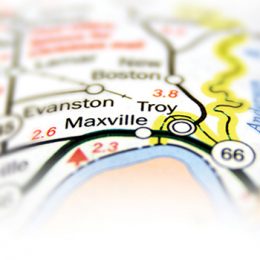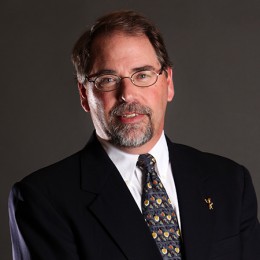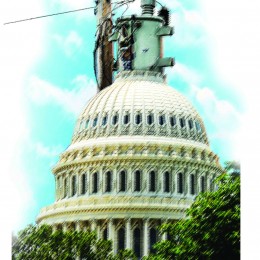 A man is on his hands and knees combing the grass below the glow of a street light one night when a police officer happens by. “I’ve lost my car keys,” the man tells the officer.
A man is on his hands and knees combing the grass below the glow of a street light one night when a police officer happens by. “I’ve lost my car keys,” the man tells the officer.
After a few minutes of helping in the search, the officer asks, “Where do you think you dropped them?”
“Oh, over there …,” the man says, gesturing toward a dark corner of the parking lot, “… closer to my car.”
The officer stops. “Then, why the heck aren’t you looking there?”
“The light’s better here,” he replies.
This old joke on human nature’s attempt to seek the easiest, not necessarily the best, course of action might bring a smile. But, unfortunately, a whole bunch of folks searching for the keys to our nation’s energy and environmental future are using a similar convenient — yet pindling — approach. Those who believe electricity must remain affordable and reliable for all Americans, however, find little funny in their quixotic quest and their draconian demands.
Right now, we have leaders in Washington and statehouses advocating wind as the answer to our energy and environmental issues. They push for portfolio mandates which will force utilities to generate or purchase a certain percentage of their overall power supply from alternatives sources. They also decide which sources are acceptable. Almost exclusively, they have deemed wind and solar as the solutions. They say mandates are needed to jump start the development of these clean energy alternatives.
These are the convenient, politically expedient solutions to the incredibly complicated energy and environmental issues before us all.
While alternatives should be developed and pursued, they are not the key to the energy shortages looming on the horizon. “Alternative” is not synonymous with “substitute.”
Sources like wind are no substitute for the baseload power — traditionally supplied by coal, gas and nuclear in this country — needed to keep our lights on, our air conditioners running and our businesses, farms and industries humming. Mandates and percentages for using alternatives, tossed out by politicians or regulators, often have no toehold in reality.
A few years ago, Tony Ahern, CEO of Ohio’s electric cooperative association, analyzed the 20 percent mandates being pushed there. To meet that mandate, he figured his state’s Lake Erie shoreline could accommodate the needed towering turbines — all 5,200 of them in 30 rows running north-south and 175 columns running east-west. This would leave very little of the lakeshore left for things such as shipping goods and recreational boating. And because wind only produces its “nameplate” amount of electricity about 30 percent of the time, additional backup generation would also have to be built or be in place when the wind wasn’t blowing.
When the wind does blow, it doesn’t correlate very well to when it’s really needed. Wind blows best in the middle of the night when little electricity is being used. And on those hot, humid summer afternoons when everyone’s cranking up their air conditioners …? There’s nary a whiff to harvest. Unlike most commodities, electricity cannot be stored in mass amounts. It has to be used when generated, or it’s lost.
As big a disconnect as there is between what the public perceives and what wind can actually deliver, there’s a bigger disconnect — a literal one — between getting wind power from where it blows best to where it’s needed. Where wind blows best, there is little transmission in place to move the electricity to populated areas. Indiana has become home to large wind farms not because wind blows so well here, but because we have that street light over head. We have the access to connect to Chicago or to eastern states.
Tens of thousands of miles of new transmission lines are going to be needed to bring new wind generation in the Plains and elsewhere to market. And you can bet each mile of it will be a slog through the swamps of regulation and litigation that will add costs and delays.
Don’t misunderstand me. I appreciate the efforts of entrepreneurs working to make clean
wind work in our energy mix. Last month, I had the opportunity to tour the Meadow Lake Wind Farm in White County. I was impressed. They say they generate at up to 40 percent of their 500 megawatt capacity. That’s much better than most folks would have imagined for Indiana. But I was most impressed by the way White County officials structured the contracts with the wind farm’s developer, EDP Renewables, ensuring upgraded county roads and even a contingency to have the giant towers removed should the enterprise go under. Landowners are reaping wonderful benefits of leasing small amounts of land for each tower and taxpayers have lower property taxes.
There are no easy answers when it comes to the sources of future electric generation. But these things are sure: we definitely all are going to have to conserve electricity more; use it more efficiently; and be smarter when we use it. If we all did our part to stop wasting resources, many of our energy and environmental conflicts could be diminished.
Let’s start combing the grounds where we’re using electricity the most. That means at our own home, farm or business. Let’s take advantage of the many programs, advice and incentives our local electric cooperative offers, and let’s act on the energy saving tips in Electric Consumer. Electric co-ops are holding a flashlight in that dark corner of that parking lot for us. Let’s be the most effective we can be searching for the keys to our energy future by starting there.



